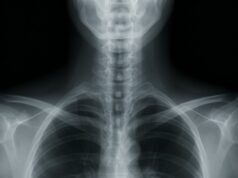
Vehicle breakdowns can happen to anyone, regardless of how well-maintained your car is. A dead battery, flat tire, or engine problem can strike at the worst possible moment. When a car breakdown occurs on busy Kansas City highways like I-435, I-70, or I-35, the situation becomes particularly dangerous due to high-speed traffic and limited space to safely pull over. If a breakdown leads to a collision or injury, a car accident lawyer can help you understand your legal rights and pursue compensation for any damages caused by the incident.
Step-by-Step Guide
1. Stay Calm and Turn on Hazard Lights
The moment you notice your vehicle having problems, stay calm and immediately turn on your hazard lights. This alerts other drivers that your vehicle is experiencing issues and gives them time to change lanes or slow down safely. Keep your hazard lights on throughout the entire breakdown situation. Take a deep breath and focus on getting to safety rather than trying to diagnose the problem while driving.
2. Pull Over Safely
Move your vehicle as far to the right shoulder as possible, ideally beyond the white line marking the edge of the travel lane. If you’re on a highway with multiple lanes, try to reach the rightmost shoulder. If your car won’t start or move, don’t panic. Turn on your hazard lights, keep your seatbelt fastened, and remain in your vehicle until help arrives. Never attempt to push a disabled vehicle on a busy highway. If you’re stuck in the middle of traffic lanes and cannot move safely, stay in your car with your seatbelt on and wait for emergency responders.
3. Call for Help
Once you’re safely positioned, call for roadside assistance through your insurance company, AAA, or your vehicle manufacturer’s emergency service. If you don’t have roadside coverage, dial *47 (*HP) to reach the Kansas Highway Patrol for assistance. In Kansas, you can contact the Kansas Highway Patrol using the same *47 number. If you feel you’re in immediate danger from traffic or if anyone is injured, call 911 immediately. When calling, clearly state that you’re experiencing a highway emergency and provide your exact location.
4. Stay Inside the Vehicle (Unless Unsafe)
In most cases, the safest place during a car accident on a Kansas City highway is inside your vehicle with your seatbelt fastened. Your car provides protection from fast-moving traffic around you. You should only exit the vehicle if staying inside is more dangerous — for example, if there is a fire or you smell gas. If you need to get out, always exit from the side that is away from traffic and move to a safe place, far from the road. After the incident, it’s wise to speak with a car accident lawyer who can guide you on the next legal steps.
Never stand directly behind your car, as approaching drivers may not see you in time. Also, avoid standing on the shoulder near the rear of your vehicle, as this is a high-risk spot where passing vehicles could hit you.
5. Use Roadside Emergency Tools (if you have them)
If you have emergency equipment and can safely place it, position reflective triangles, emergency flares, or cones about 100-200 feet behind your vehicle to warn approaching drivers. Only attempt this if you can do so safely and quickly. Reflective triangles are often the safest option as they don’t require lighting and provide continuous visibility. If you have a reflective vest or bright clothing, put it on before exiting your vehicle to increase your visibility to other drivers.
6. Know Your Location
When calling for help, knowing your exact location helps emergency services find you faster. Look for highway signs showing your route number (like I-435 or I-70), direction of travel (north, south, east, west), mile markers, or the nearest exit number. If you have a smartphone, you can also share your GPS coordinates. Describing nearby landmarks, such as “eastbound I-70 near the Truman Sports Complex” can also help responders locate you quickly on busy Kansas City highways.
Tips to Prepare Before a Breakdown Happens
Prevention and preparation significantly reduce the stress and danger of highway emergencies. Keep an emergency kit in your car that includes a flashlight with extra batteries, bottled water, a portable phone charger, reflective vest, emergency flares or triangles, basic tools, and a first aid kit. Regularly maintain your vehicle by checking oil levels, tire pressure and tread depth, battery connections, and fluid levels. Schedule routine maintenance according to your manufacturer’s recommendations to catch potential problems before they lead to roadside emergencies.
Always keep your insurance card, vehicle registration, and emergency contact information easily accessible in your car. Consider signing up for roadside assistance through your insurance company or auto club before you need it. Familiarize yourself with the emergency numbers for your area and program them into your phone. Teaching all family members these procedures ensures everyone knows what to do during a car breakdown in Kansas City.
Conclusion
Car breakdowns on busy highways are stressful situations, but they become manageable when you know the proper steps to take. The key is staying calm, getting to safety quickly, and calling for professional help rather than attempting repairs yourself. By preparing an emergency kit and maintaining your vehicle properly, you can reduce the likelihood of experiencing a breakdown. Remember that your safety is more important than your schedule, so take the time needed to handle the situation properly when driving on Kansas City’s busy highways.






